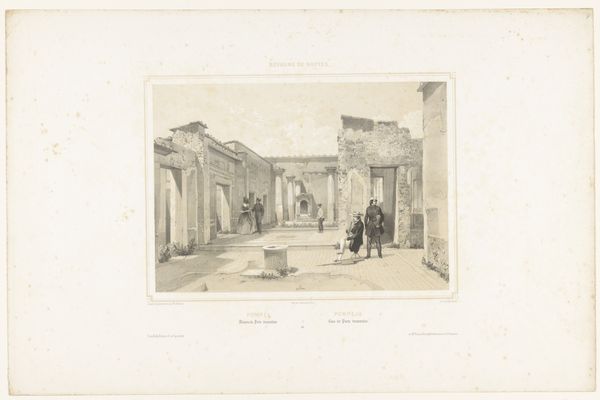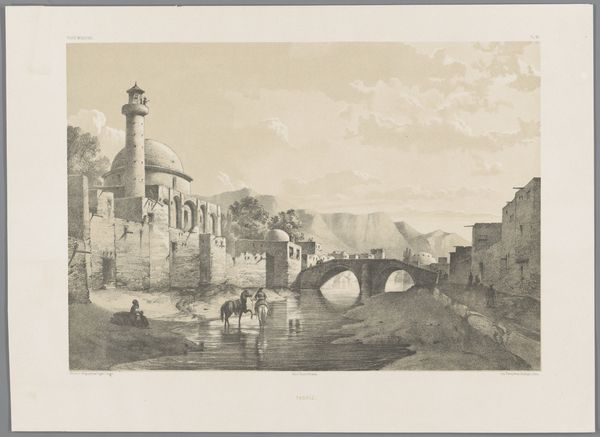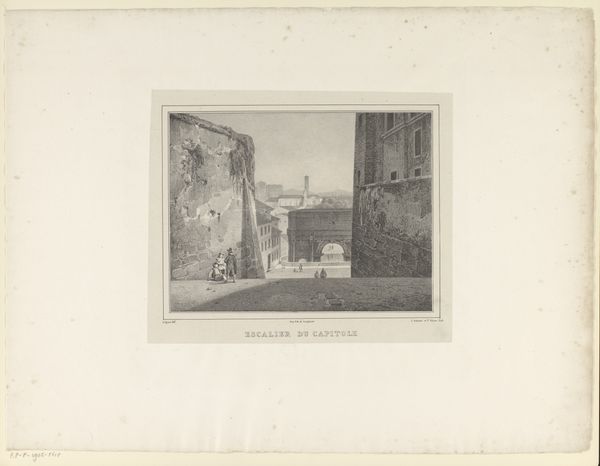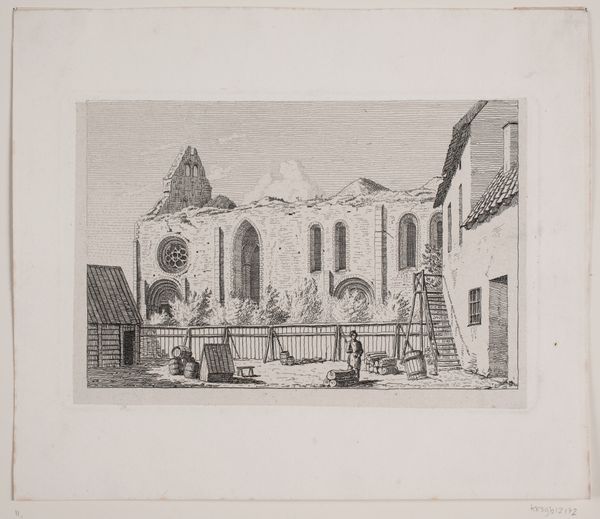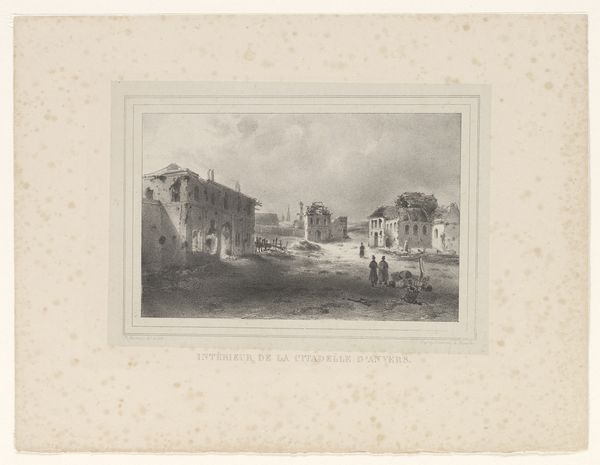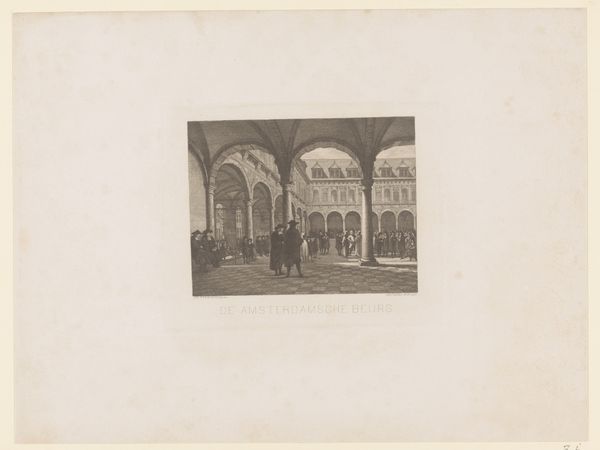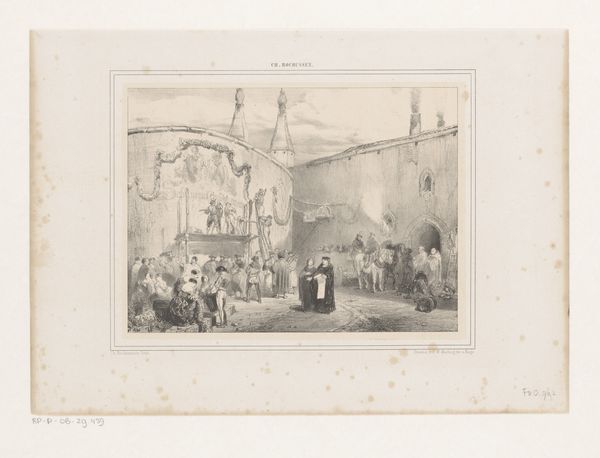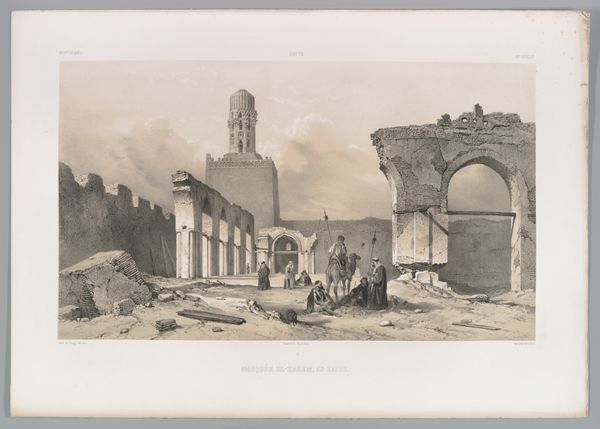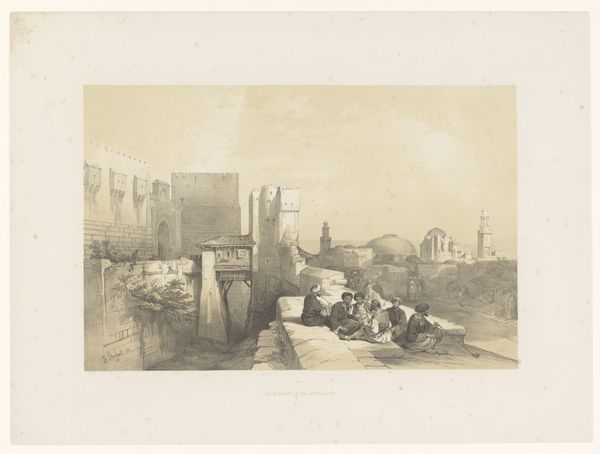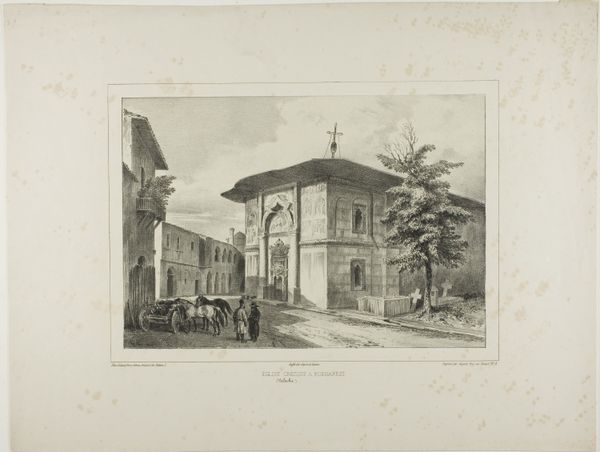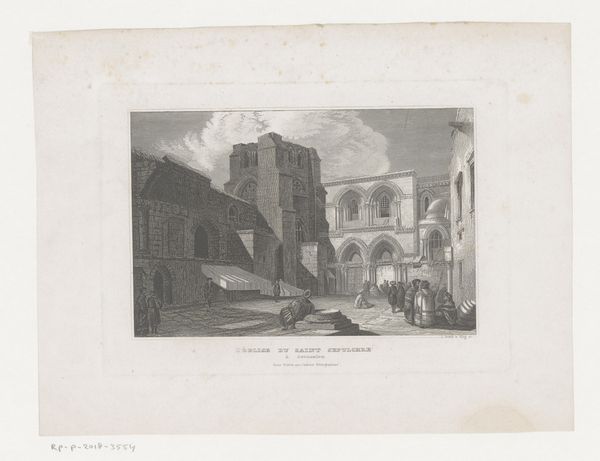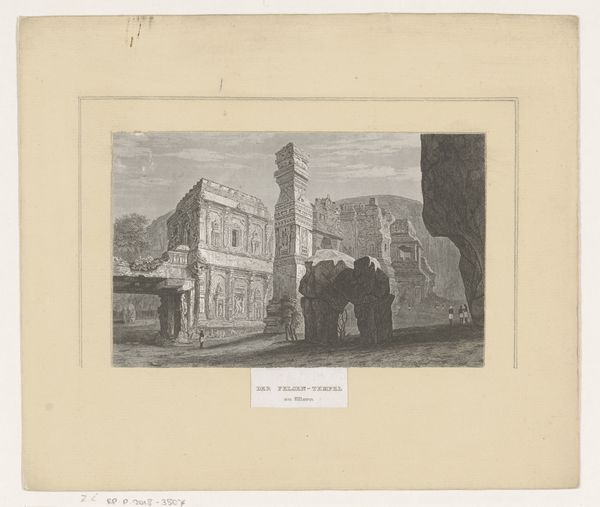
drawing, print, etching, paper, ink
#
drawing
# print
#
etching
#
landscape
#
perspective
#
paper
#
ink
#
cityscape
#
islamic-art
Dimensions: height 430 mm, width 509 mm
Copyright: Rijks Museum: Open Domain
Editor: This is Eugène Flandin's "Vank-kathedraal van Isfahan," made between 1843 and 1854. It’s an etching printed with ink on paper, showing the cathedral in a cityscape. I’m immediately struck by the contrast between the delicate lines of the architecture and the heavier shadows. How would you interpret this work? Curator: What fascinates me is understanding this piece within its production context. Consider the etching process itself: the labor involved in meticulously incising the plate, the socio-economic factors that determine who had access to these materials and skills. This wasn't just about capturing a scene, but about a very particular way of seeing and representing, available only through specialized labor and specific tools. Editor: That's interesting. I hadn’t thought about it in terms of access to resources. So the very act of creating this print carries a social message? Curator: Absolutely. And think about the consumption of these prints. Who was the intended audience? What stories were being told, and whose stories were omitted in this depiction of Isfahan? The choice of etching as a medium speaks to a desire for wider distribution than perhaps a painting would allow. We have to think about art beyond aesthetics – we have to see it as embedded in complex networks of labor, materials, and power dynamics. What’s visible is just one element. Editor: I see what you mean. It's like each line, each shadow, tells a story about production and consumption of art. I’m now wondering about the type of paper used. Curator: Exactly. Looking closely at the materiality gets us closer to a broader understanding. So what have you learned today? Editor: This conversation has taught me to think about the broader network and the political economy behind even what seems to be just a simple landscape.
Comments
No comments
Be the first to comment and join the conversation on the ultimate creative platform.

